This website uses cookies so that we can provide you with the best user experience possible. Cookie information is stored in your browser and performs functions such as recognising you when you return to our website and helping our team to understand which sections of the website you find most interesting and useful.
Home Care In Birmingham, AL

They say that your golden years are the best years of your life. For most older Americans, that's how it should be - a time to relax, reflect, and live life in a familiar place. After all, senior citizens in the U.S. have worked tirelessly to build a better economy, serve their communities, and raise families.
However, as seniors grow older, completing daily tasks like showering and enjoying activities such as visiting Sloss Furnaces National Historic Landmark in Birmingham, AL gets harder without someone by their side. Unfortunately, many older Americans aren't able to rely on their adult children for help. The reality in today's world is that family members do not have the skills or time to dedicate to caring for their parents. That's where Always Best Care Senior Services comes in.
Our in-home care services are for people who prefer to stay at home as they grow older but need ongoing care that family or friends cannot provide. More and more older adults prefer to live far away from long-term, institutionalized facilities and closer to the place where they feel most comfortable - their home. Home care in Birmingham, AL is a safe, effective way to give your loved ones the care they need when they need it the most.

 Home Care Services
Home Care Services
- Home Care in Birmingham, AL
- The Always Best Care Difference
- Types of In-home Care in Birmingham, AL
- Benefits of Home Care in Birmingham, AL
- Aging in Place: The Preferred Choice for Most Seniors
- Affordable Care Plans
- Compassionate Care. Trusted Caregivers
- Assisted Living Referral Services
- Taking the First Step with Always Best Care
 Service Areas
Service Areas
The Always Best Care Difference
Since 1996, Always Best Care has provided non-medical in-home care for seniors to help them maintain a healthy lifestyle as they get older. We are proud to have helped more than 25,000 seniors maintain higher levels of dignity and respect. We focus on providing seniors with the highest level of in-home care available so that they may live happily and independently.
Unlike some senior care companies, we genuinely want to be included in our clients' lives. We believe that personalized care is always the better option over a "one size fits all" approach. To make sure our senior clients receive the best care possible, we pair them with compassionate caregivers who understand their unique needs. That way, they may provide care accordingly without compromising their wellbeing.
The Always Best Care difference lies in life's little moments - where compassionate care and trustworthy experience come together to help seniors live a fruitful, healthy life. Whether you are an aging adult that can't quite keep up with life's daily tasks or the child of a senior who needs regular in-home services, Always Best Care is here to help.
“All of the caregivers we encountered through Always Best Care in Birmingham were top-notch. Every”
“Always Best Care makes it easier being a mom! I am able to show up”
“Jennifer and her excellent staff do a wonderful Job for Elder Care in the home.”
“Christy is great!!!!!!!!”
“I am a current client of this provider They are responsive. They provide care, and we can”
“Our new elder-care specialist is Ruby Carroll, whom my mother adores. She says Ruby has”
“This is a five-star home care agency! Jennifer and her team go above and beyond”
“I would highly recommend Always Best Care Senior Services to anyone looking for quality, tailored”
“Jennifer and her team are the premier Homecare agency in the Birmingham area. They are”
“Always Best Care Birmingham is a world class organization. They put the client first...Always! I”
“Amazing organization! If you need care please call Always Best Care Birmingham AL. They will”
“I give this agency 5 stars! Professional and genuine support is what you get with”
“We are so incredibly grateful for the exceptional care that Grace Slaughter has provided for”
“This company lives up to its name. It’s really nice to have people helping out”
“I am a current client of this provider They have been consistently providing us with good”
“Caregiver Adrina Bradford has been with us, taking care of my wife during the work”
“I am a current client of this provider They do a good job of fitting me”
“Always Best Care has given excellent care with great attention to the needs of the”
“I am a current client of this provider I like that the people they have sent”
“If you are looking for a reliable, trustworthy, kind caregiver, call Always Best Care right”
“I would like to thank our caregiver Ruby who has taken care for my husband”
“I am grateful for the care Veronica with Always Best Care Senior Services has shown”
“T has been a wonderful caregiver!”
“The staff at Always Best Care is top tier. They were outstanding to work with”
“Always Best Care in Birmingham was wonderful. Caring, reliable team who kept us informed every”
“I am a past client of this provider Patricia M. has been with us for several”
““I chose Always Best Care because they were one of the top-rated agencies in the”
““They accomplish with giving me a great individual that knows me and knows what to”
“I work for Always Best Care. I’ve never worked for a company that the owner”
“It allows us to go to church. I like that they always make sure we”
“I really couldn't be more pleased than the way things are working out. Things always”
“My family has been so fortunate to have Eloise Shaw caring for our mom for”
“I am a current client of this provider It's been helpful just having someone here with”
“I am a current client of this provider Caregivers care for my parents. Allow us to”
“I am a current client of this provider They are doing what we are asking them”
“I am a current client of this provider I was out of town and needed someone”
“I am a current client of this provider The lady who comes during the week is”
“I am a current client of this provider They do everything for her. They are conscientious people.”
“I am a past client of this provider The client liked them coming and they were”
“I am a current client of this provider It really depends on who shows up. They would”
“I am a current client of this provider My mother is very ill and cannot take”
“Working with seniors at Always Best Care Senior Services gives me a good feeling...to know”
“Good morning, Jennifer. Thank you so much for all that you did for my mother-in-law”
“Great service!The best care service ever!I am looking forward to getting old!”
“I chose to work for Always Best Care ABC because they are personable with clients”
“Jeannie is extremely capable and treats and cares for Alice like she’s her own family/”
“Happy 10th Anniversary to Always Best Care, who I love working for! Always Best Care”
“I hate the idea of the elderly being locked away in nursing homes against their”
“I am a current client of this provider They have really good caregivers. They are a compassionate”
“A friend of mine told me about Always Best Care. I am good with everything;”
“I am a current client of this provider They show up. They have great caregivers.”
“She seems to be doing well. Some days are better than others but for the”
“This is to say that Shamika has been a good nurse to me. She has”
“Marianne always does a great job for me. She really looks after me. She is”
“Aniyah gets huge praises from mother for her maturity, tenacity and doing the "right thing.””
“Jennifer I am writing to give Always Best Care my highest recommendation. I have worked”
“Norma Jean is such good company, She likes to talk and so do I. I”
“I love working there, especially with the boss, Andrew. He is very friendly. I like”
“Always Best Care responded quickly to our request for help with my 92-year-old father when”
“Debbie has the eyes of an angel! She has been so helpful to me. When”
“They have given me the most by providing care for my father. They do meal”
“The staff that comes to my house are what I like about this agency. They”
“Kinyatta arrives with an aura of peace and rest and competence. It affects all her”
“Surlina is an excellent caregiver. I enjoy being with her. She is a lovely lady”
“Hello, Jennifer. Thanks for all your help. You and your staff are so polite and quick”
“CeCe was extremely helpful yesterday and I am so glad she was with Mom when”
“They help my mother with her showers and food. The caregivers will even help with”
“I love Eloise! She does a great job for me and is a sweetheart. Eloise”
“My caregiver, Eloise, is my wonderful friend. We enjoy being together. She cares about me”
“I like that the staff is friendly, and they answer any questions you need. We”
“I like the people that were in the office when I went to apply for”
“Ankle is doing great and I'm up and around, running errands, etc! I cannot (again)”
“Thank you for your continued support and the great support your caregivers are providing to”
“Thank you for your continued support and the great support your caregivers are providing to”
“Florence, I just must tell you how much I appreciate what you did for me”
“Florence, I just must tell you how much I appreciate what you did for me”
“Always Best Care has awesome cooperation with me. The services help me in my day”
“I've recommended the company to two other people. Everyone was wonderful. The caregivers were responsive”
“Eloise is just heaven sent. She is so nurturing to my mother. Eloise has a”
“Dee, as Mr. and Mrs. Keel call her, is working out simply fine. We are”
“Very responsive to our needs Jamie Wise and the sitters we have gotten through Always”
“Lenora made my day!!! I was at home this morning feeling sad and lost after”
“Mostly, what we like, is the caregiver that Mama has. The services have been great,”
“You all have been OUTSTANDING! Marilyn K. has really stood out as a caregiver. I”
“This company was referred to me by a friend. I like that they will work”
“I like the professional attitude of the folks who came out. They were very, very”
“We are doing very well with Ms. Alaccia D., who has been a hit with”
“I would recommend them because they provide personalized care. My mom had very low functionality”
“My caregivers, Carmen and Camry, are two very gifted and educated professionals with whom I”
“Carmen Brown and Camry Brown are so helpful, talented and true professionals! Multiple sclerosis (MS)”
“They do a perfect job matching the caregivers with the clients. I have two different”
“Dear Jennifer, our dear Sister, Mary Henderson that you worked with passed away December 2016.”
“I am a past client of this provider I heard from them from friends. They were excellent”
“I really liked that they were reliable and that someone always came when they were”
“Debbie made everything incredibly easy! Everyone has been fantastic! We adored Carla! The attention to”
“I chose to work for them because I am in nursing school and another student”
“Shulunda is terrific and is making a great, positive impact. She is an awesome clinician”
“I chose to work for Always Best Care because I was looking for a company”
“I would give Always Best Care a 10/10 rating because I like the communication! The”
“I chose to work for Always Best Care because I wanted to get more experience”
“LaToshia is OUTSTANDING!”
“Good morning Mrs. Jennifer! I want to take time out to say "Thank You" for”
“Arianna Rogers is super! We had such a good time together! After having surgery, it”
“Thank you again. You have been wonderful.”
“They follow up and make sure everything is going okay, and if you have any”
“Last time, I had to call off last minute because of a car emergency, and”
“I selected them because I felt like we could trust them. I like them because”
“For my father, his mental health is doing much better, he has a really good”
“I chose to work for Always Best Care because I like that the schedule is”
“Thank you so much for your kindness and the beautiful floral arrangement…expression of love. We”
“I chose to work for them because I always heard good things about them, I”
“Jennifer, we had a wonderful funeral for my Dad yesterday. Monica Clark joined us-she is”
“This is Laclement Gamble and I wanted to take the time to brag on a”
“Vanessa provides a high level of service and was invaluable. We recommend her to your”
“My Dad selected them for my Mom, and I would recommend Always Best Care because”
“I am a current client of this provider The services are impactful because I am able”
“I would recommend Always Best Care because they were reliable and had accountability. It was”
“Daffeney is great and my friend! She is so good to me! She makes sure”
“I chose to work with Always Best Care because I was working with a nursing”
“Your case manager, Audrey Davis, is FABULOUS! She goes above and beyond the call of”
“Thank you so much Jennifer. You have been a great resource for my family during”
“Thank you so much. You and your employees have been fantastic, and it is greatly”
“I chose Always Best Care because they were one of the top-rated agencies in the”
“Good morning, I want to commend Eloise Shaw on a great job. She is such”
“They are always on time, attentive, and they did what they said they would when”
“I recommend Always Best Care because they have great customer service. If there's a problem,”
“Dear friends at Always Best Care, Thank you so much for the special birthday greetings”
“D.M. does an excellent job with my dad! When we can have her scheduled to”
“We are doing very well with Ms. Alaccia D., who has been a hit with”
“I take pride in providing the best quality care and also for working hard for”
“I like that the office people are really nice and they match us with good”
“We love Jameia so much.We want to keep her forever. She does a wonderful job”
“We really like Brenda S. and Bertha S.! They engage with my grandparents on a”
“We really like Brenda S. and Bertha S.! They engage with my grandparents on a”
“I chose to work at Always Best Care because they have a high-quality service, and”
“Hey y’all! I’m just leaving the client’s house and wanted to tell you that Alaccia”
“You are so welcome! I truly enjoy working with Always Best Care!”
“It is a good company to work with. They are polite and you can talk”
“I wanted to let you know that Carolyn Ross was a great caretaker for my”
“Eloise Shaw works with my mother-in-law and I want you to know that she is”
“We are so proud of our devoted employees like Eloise Shaw. No matter where so”
“Dear Jennifer, our entire family thanks you for all your efforts and your staff’s efforts”
“All the caregivers that cared for my sister-in-law were nothing, but caring, compassionate and so”
“Your employee, Jen, is delightful. She is very pleasant and knows just the kind of”
“Florence, good morning. I am so happy that dad has decided to go back to”
“Jennifer! Wonderful experience, dedicated care providers, truly kind people.”
“Kristen Parker was efficient, knowledgeable, and kind. She went the second mile to be sure”
“I called in to the office today because I had questions. I spoke with Kasandra”
“All of the caregivers we encountered through Always Best Care in Birmingham were top-notch. Every single one brought something of value, even if it was something that seemed relatively small, to help ease my mom's pain and increase her comfort during her final days battling cancer: Claudia, Nessa, Tomi, Veronica, Virginia, Tiffanie, Kristin, Lateria, Mary, Pat, Kristhyne, and Tiera. I truly don't know what we would have done without them. Thank you to each of them for being of such profound service during a time when our family really needed help.”
“Always Best Care makes it easier being a mom! I am able to show up for my kids when they need me without feeling guilty. they’re very understanding and they make it less stressful finding a work/life balance. Not to mention the rewards, and appreciation they always show.”
“Jennifer and her excellent staff do a wonderful Job for Elder Care in the home. She gave us great advice about caring for Elders and when it is time to place them in assisted living or memory communities. I would recommend anyone to call and talk to Jennifer or her staff about Senior Care.”
“Christy is great!!!!!!!!”
“I am a current client of this provider They are responsive. They provide care, and we can continue with our lives.”
“Our new elder-care specialist is Ruby Carroll, whom my mother adores. She says Ruby has been an exceptional companion. She's observant of my mother's needs, willing to do anything requested of her, and keeps on-task to ensure difficult chores are done well. My mother says she couldn't be more delightful to be with. We're grateful for Ruby Carroll's regular help. Thank you! Yasmin Walls is our elder-care specialist. My mother confides that she is "wonderful beyond words." Today, while she was assisting my mother with checking out at our local grocery, Yasmin reminded Mom that her debit card was at home in the kitchen. Yasmin quickly zipped back to the house, grabbed the card, and returned to my mother, who made her purchase. Yasmin is enormously helpful and resourceful. We are truly grateful.”
“This is a five-star home care agency! Jennifer and her team go above and beyond when caring for your loved one. I highly recommend Always Best Care in Birmingham!”
“I would highly recommend Always Best Care Senior Services to anyone looking for quality, tailored and compassionate caregiving services!”
“Jennifer and her team are the premier Homecare agency in the Birmingham area. They are experienced, skilled, responsive and above all, kind!”
“Always Best Care Birmingham is a world class organization. They put the client first...Always! I highly recommend them when needing help with your family. They appreciate the hardships that the client is experiencing and step up to support. Thank you Jennifer Mancuso!”
“Amazing organization! If you need care please call Always Best Care Birmingham AL. They will take care of you or your loved one with exceptional care and compassion.”
“I give this agency 5 stars! Professional and genuine support is what you get with this company The owner, Jennifer has operated this company for over 15 years and has built a reputation of excellence because of the quality services that have been delivered year over year. She has high standards and keeps the bar of expectations high in all that she does.”
“We are so incredibly grateful for the exceptional care that Grace Slaughter has provided for our 92-year-old grandmother. Grace is not just a caregiver; she has truly become a cherished companion and an essential part of our family. Grace's warmth and professionalism were clear from day one. She approaches every day with a positive attitude that lifts my grandmother's spirits, and she treats her with the utmost dignity and respect. One of the small things that means so much is the time they spend together, like when they share a laugh while watching Steve Harvey. It’s these moments of genuine connection that highlight how much she truly cares. Beyond her caring nature, Grace is also wonderfully reliable and proactive. She handles everything with ease ensuring the house is safe and comfortable and we have complete peace of mind knowing our grandmother is in her hands.”
“This company lives up to its name. It’s really nice to have people helping out and you don’t have to tell them what to do. My husband fell in love with Nessa. He ask me where did you find her? Very kind and compassionate people are really hard to find. Thanks to all of you.,”
“I am a current client of this provider They have been consistently providing us with good caregivers. They have given me resources I did not expect.”
“Caregiver Adrina Bradford has been with us, taking care of my wife during the work day when I’m away from the house, for almost two years and has always been courteous and attentive to my wife's needs. Don’t know what we’d do without her!”
“I am a current client of this provider They do a good job of fitting me with a caregiver who meets my needs. They are always on time with a good attitude.”
“Always Best Care has given excellent care with great attention to the needs of the patient. Our caregiver, Rene M., has given exceptional care and anticipates every need of her client. Another exceptional caregiver with Always Best Care is Latanya W. Her skills in taking care of the patient are of ultimate importance as is her attention to every detail of care needed. Caregiver, Rene M., gave expert care and comfort to my husband until the very last day. Her care to him and words to me, too, were very helpful in getting through this difficult time.”
“I am a current client of this provider I like that the people they have sent and when they have not been a good fit they make good changes. They have listened to what our specific needs are.”
“If you are looking for a reliable, trustworthy, kind caregiver, call Always Best Care right now! We have been so pleased with this company and our caregiver Natesha. She is always on time, provides excellent service and is so pleasant. We are lucky to have her in our home to assist. Thanks ABC and Natesha!”
“I would like to thank our caregiver Ruby who has taken care for my husband for several months now. She is caring, dependable and a good person. Thanks for all you do Ruby.”
“I am grateful for the care Veronica with Always Best Care Senior Services has shown to my mother. She has shown kindness and patience - treating her with respect during a transitional period. It's not always easy to find skilled home health care. It is comforting to know that a loved one can have assistance from a trained, experienced, insured, bonded, skilled home health care professional when needed. Thank you Veronica and ABC Senior Services!”
“T has been a wonderful caregiver!”
“The staff at Always Best Care is top tier. They were outstanding to work with very attentive to our family's needs. Mary worked most frequently with my mother and did an excellent job. Mom liked days Mary would show. I wouldn't trust my loved one with anyone other than Always Best Care.”
“Always Best Care in Birmingham was wonderful. Caring, reliable team who kept us informed every step. Highly recommend them for anyone needing compassionate senior home care in the area. Truly grateful!”
“I am a past client of this provider Patricia M. has been with us for several years. She has worked with my 92 year old mom and dad. Patricia is always professional and treats my parents so well. My dad passed in April and Patricia has been so kind to my mom. She sits with her and takes her on the front porch for some much needed fresh air. She fits right in with our family and we all think so highly of her as a person and a sitter!”
““I chose Always Best Care because they were one of the top-rated agencies in the Birmingham area. The office staff is excellent. I work the night shift, and they have been pretty accommodating with contacting me during the hours I am usually able to talk or get back to me whenever I leave a message. My grandmother is almost 95; she is stubborn, set in her ways, and has dementia. Sometimes it's hard to get her moving, out of bed, or to do anything. The caregiver is very patient with her. Overall, she likes having a different companion than the family member who was staying there. Having someone different in the house has been a lot better.” M. Watkins, granddaughter of the client.”
““They accomplish with giving me a great individual that knows me and knows what to do/ She is very resourceful and has a great attitude/” Carl Bailey”
“I work for Always Best Care. I’ve never worked for a company that the owner reaches out to praise your work ethic. I love my job. I strive hard to be the best representative for Always Best Care. I want everyone to know that their families and families homes will be cared for as if they were our own. It’s my pleasure to help others lead as fulfilling a life as humanly possible. This takes the stress from the clients family. We really are a family at Always Best Care. Though not related, we all have the same outlook and goals.We strive to help others to continue living their best lives. Sincerely, Debbie H , caregiver.”
“It allows us to go to church. I like that they always make sure we have coverage.”
“I really couldn't be more pleased than the way things are working out. Things always work out. Mom is pleased so I am pleased!”
“My family has been so fortunate to have Eloise Shaw caring for our mom for these last 3 years. She is exceptional in every way: is truly caring, has a top-notch professional work ethic, has an uncanny ability to use humor to defuse difficult situations (our mom can be pretty grumpy at times), has a wonderful disposition, and is always open to suggestions. Mom was not happy about having a caregiver or a stranger in her home, but Eloise wiggled her way into Mom’s heart. Always Best Care is lucky to have Eloise, and so are we! Thank you!”
“I am a current client of this provider It's been helpful just having someone here with a loved one who has dementia. Their scheduling could improve.”
“I am a current client of this provider Caregivers care for my parents. Allow us to live our daily lives. Sometimes they have to change caregivers. They've been able to find caregivers that live in rural area.”
“I am a current client of this provider They are doing what we are asking them to do and there have been no problems. I like that the people are really good.”
“I am a current client of this provider I was out of town and needed someone here with John, and I felt good they provided a caregiver. I like the flexibility.”
“I am a current client of this provider The lady who comes during the week is just awesome he name is Colandra she does a wonderful job. I like that they are reliable and they are well-trained and it has been a good experience having them.”
“I am a current client of this provider They do everything for her. They are conscientious people.”
“I am a past client of this provider The client liked them coming and they were good. I had several services and they have been the best. The caregivers exercised with the client. I had a list of exercises I wanted them to do with him every day and they helped him with that. I liked that they were prompt and knowledgeable about what they were doing. I also liked that the trainer came and told the CNAs exactly what to do.”
“I am a current client of this provider It really depends on who shows up. They would need to be consistent with the caregivers.”
“I am a current client of this provider My mother is very ill and cannot take care of herself, so she has 24/7 service. Having someone look after her provided us with a sense of security and relief. I would recommend them because they are good at communicating and are easy to reach and discuss things with.”
“Working with seniors at Always Best Care Senior Services gives me a good feeling...to know you have made them happy and see them smile. It's a great feeling when you have served them, and they can't wait for you to return!”
“Good morning, Jennifer. Thank you so much for all that you did for my mother-in-law and the family. You bring such a caring and loving service.”
“Great service!The best care service ever!I am looking forward to getting old!”
“I chose to work for Always Best Care ABC because they are personable with clients and workers. From the outset they have assisted me with everything I needed! Before I begin with a new client, they share details of the care plan (even about the animals & family members). On occasion, while on duty I have been visited by the office staff to check in on things. I see them love on the client just like I do! It’s not a question of why Always Best Care. My question would be why NOT Always Best Care? I’m ecstatic about Always Best Care and I tell all my friends. I’m trying to bring them all aboard!”
“Jeannie is extremely capable and treats and cares for Alice like she’s her own family/ She is thorough and firm, yet gentle and respectful/ She is also good about keeping me informed about things that transpire during the day while she is providing care in my absence, which helps me feel a level of comfort that Alice is being well cared for!”
“Happy 10th Anniversary to Always Best Care, who I love working for! Always Best Care has placed me with the sweetest clients; I am equipped with the knowledge I need to take care of every client. The staff at the office is loving and kind. Mrs. Jennifer, franchise owner, is a very sweet and caring person. So, since I love working with the elderly and with people in general, Always Best Care is the BEST place for me to be!”
“I hate the idea of the elderly being locked away in nursing homes against their will. I am happy to work for Always Best Care because I love helping the elderly remain at home longer. I've been caregiving for 21 years now but never have I worked with a group of people that are so passionate about the work they are doing. I'm blessed to be able to work for such a compassionate group of people that go above and beyond not only for the clients but for the caregiver as well.”
“I am a current client of this provider They have really good caregivers. They are a compassionate company. They know what is needed.”
“A friend of mine told me about Always Best Care. I am good with everything; I don't have a reason not to. I like that so far, they keep me working & some of the employees I like very much, & they are Dale and Autum. They are very kind to me. Whatever they are willing to give me, I will take.”
“I am a current client of this provider They show up. They have great caregivers.”
“She seems to be doing well. Some days are better than others but for the most part she is doing good. Thanks for all you and your staff do. It's a big help knowing she has a person coming by to help her.”
“This is to say that Shamika has been a good nurse to me. She has been very patient and informative about my situation. She has a very pleasant attitude and is always happy. It's been an incredibly good experience, so far.”
“Marianne always does a great job for me. She really looks after me. She is never late and is very faithful to taking care of my needs. I can tell that Marianne is really concerned about me!”
“Aniyah gets huge praises from mother for her maturity, tenacity and doing the "right thing.” Please tell her thank very much. You have an excellent employee. Also, I want to highly recommend Laquita for the great job she did with mother yesterday. There is one more excellent person on your team that I would like to give praises to and that is Christy. She is the most pleasant, helpful, and proficient person that I have come in contact within a business in a long time. She is always extremely professional. Your staff has been exceptional. Kudos!”
“Jennifer I am writing to give Always Best Care my highest recommendation. I have worked with the team there at Always Best care for many months and they have been wonderful/ They are always available when I need them. The caregivers have been reliable, kind and willing to do anything I ask. All the employees have been exceptional and professional. Everyone I have encountered has clearly shown pride in doing an outstanding job. In every instance, their employees have been a great help to me. I would be happy to talk to anyone who has questions about my experiences with Always Best Care.”
“Norma Jean is such good company, She likes to talk and so do I. I am very comfortable with her and think she likes me, too. I also really like Florence. She is so cute and nice. Recently, she dropped what she was doing and drove me to the hairdresser. I really appreciated that! She pops in and brings me gifts too!”
“I love working there, especially with the boss, Andrew. He is very friendly. I like that they understand my background. I am happy that they understand me because that is what let me be effective. Their training is super! I never knew about training back where I come from, so it has opened my eyes. From time to time, they give me gift cards! I think I have one or two certificates from them saying thank you for my hard work too. Everyone in the office receives me very warmly and it is realness. I am very caring individual, so I can fill the needs for someone else. For me, it comes naturally.”
“Always Best Care responded quickly to our request for help with my 92-year-old father when the previous worker quit unexpectedly. I found everyone to be punctual and very professional in all aspects of the service.”
“Debbie has the eyes of an angel! She has been so helpful to me. When she told me “We’ve got this!”. I was so relieved. Debbie has been very comforting and encouraging at a difficult time for me and my mother.”
“They have given me the most by providing care for my father. They do meal prep, laundry, help him with exercises and bathe him. I appreciate their willingness and that they will do whatever is asked of them.”
“The staff that comes to my house are what I like about this agency. They were good about giving me information regarding my cancer. They have been courteous and prompt. I appreciate the communication from them and their knowledge.”
“Kinyatta arrives with an aura of peace and rest and competence. It affects all her surroundings, pervading our home and circumstances, and I find rest just knowing she is here. She is intuitive when reacting to my husband’s responses, which are different from his responses before Alzheimer’s disease. I have learned much from her about taking challenging situations more slowly and calmly and always kindly. Heartfelt appreciation to her and to Always Best Care for hiring someone of such great character and ability!”
“Surlina is an excellent caregiver. I enjoy being with her. She is a lovely lady who makes my day!”
“Hello, Jennifer. Thanks for all your help. You and your staff are so polite and quick to respond. Thank you.”
“CeCe was extremely helpful yesterday and I am so glad she was with Mom when the incident occurred. She is an asset to Always Best Care.”
“They help my mother with her showers and food. The caregivers will even help with her exercises. I had tried some other companies, but Always Best Care has a good reputation.”
“I love Eloise! She does a great job for me and is a sweetheart. Eloise is like one of my family members.”
“My caregiver, Eloise, is my wonderful friend. We enjoy being together. She cares about me and I love her dearly.”
“I like that the staff is friendly, and they answer any questions you need. We have yearly online classes, so the flexibility is wonderful. They send out emails and bonuses; I appreciate just the recognition of being told, Thank you. The office staff has been helpful in sending me information I need in a timely manner. I appreciate that they make sure the demographic of the client and the caregivers are compatible.”
“I like the people that were in the office when I went to apply for a job. If you have a problem, they help you out in whatever you may need. I have learned a lot while working for this company, things that I did not know before. The company acknowledges and thanks me when I go above and beyond my job. The office staff is caring, kind and friendly. They have helped me by getting me the things that I need. When going to a new client they explain to me what the client has gone through that way I know that I am knowledgable before entering the home.”
“Ankle is doing great and I'm up and around, running errands, etc! I cannot (again) thank you so much for helping me out and making this happen. I know it was a longer day then Kathy had hoped, but she was a trooper for sure. I will give you a call again when I have the ACL done!”
“Thank you for your continued support and the great support your caregivers are providing to my mother. Much of her progress is directly due to the care she received from your concerned and helpful staff. We would like to recognize Veronica and Arianna. They have both gone above and beyond their duties in caring for my mom and they epitomize your company name. Again, thanks for all you do.”
“Thank you for your continued support and the great support your caregivers are providing to my mother. Much of her progress is directly due to the care she received from your concerned and helpful staff. We would like to recognize Veronica and Arianna. They have both gone above and beyond their duties in caring for my mom and they epitomize your company name. Again, thanks for all you do.”
“Florence, I just must tell you how much I appreciate what you did for me this afternoon. That was such a thoughtful thing for you to do, and so helpful to me! I have taken the prescription, and I feel so much better already! It was such a timely thing for you to do for me, and I know it cut into your schedule for the afternoon, but I just can’t tell you how much it helped me! I was a bit ‘unsettled’ about what to do when you unexpectedly offered to go get it for me. It was a very kind thing for you to do, and I deeply appreciate it. Do come back when you have time to stay and have a hot cup of something!”
“Florence, I just must tell you how much I appreciate what you did for me this afternoon. That was such a thoughtful thing for you to do, and so helpful to me! I have taken the prescription, and I feel so much better already! It was such a timely thing for you to do for me, and I know it cut into your schedule for the afternoon, but I just can’t tell you how much it helped me! I was a bit ‘unsettled’ about what to do when you unexpectedly offered to go get it for me. It was a very kind thing for you to do, and I deeply appreciate it. Do come back when you have time to stay and have a hot cup of something!”
“Always Best Care has awesome cooperation with me. The services help me in my day to day life because the caregivers help me around the house. They also drive me around which I appreciate. The office staff has good communication with me and answer my questions.”
“I've recommended the company to two other people. Everyone was wonderful. The caregivers were responsive to my mother’s needs, like washing dishes and clothes. Caregiver Marilyn K. went above and beyond for my mother. The office staff was always available and kept me up to date on scheduling.”
“Eloise is just heaven sent. She is so nurturing to my mother. Eloise has a calming spirit that my mother and I just love. Thank you so much for sending Eloise to us.”
“Dee, as Mr. and Mrs. Keel call her, is working out simply fine. We are incredibly pleased with the work she is doing for us. Dee went above and beyond whatever we asked her to do.”
“Very responsive to our needs Jamie Wise and the sitters we have gotten through Always Best Care have been so caring, attentive and well-spoken. They are wonderful individuals with a lot of experience caring for the elderly. Always Best Care is always available and responsive to our needs. It is so nice to have them to turn to for help with my mother. It takes a lot of burden off my shoulders.”
“Lenora made my day!!! I was at home this morning feeling sad and lost after the demise of a patient I took care of for almost a year. Lenora’s call was assuring, encouraging, and made me feel somebody out their cares, it made a huge difference. We are blessed to have her in our midst and appreciate all she is doing.”
“Mostly, what we like, is the caregiver that Mama has. The services have been great, and we are happy with her particular caregiver.”
“You all have been OUTSTANDING! Marilyn K. has really stood out as a caregiver. I have sung your company's praises here at church and in our neighborhood. Since my husband and I work full-time, I have been so grateful to find a company like yours that can step in and help out and allow us to continue working. My hope is that mother will begin to get stronger in the next couple of weeks and be able to live ‘independently’ in Assisted Living in the very near future. Thank you again for your excellent care!”
“This company was referred to me by a friend. I like that they will work with me are flexible with my schedule! They even send out emails saying, “Thank you and will give out gift cards!” They have helped me by calling me back quickly when I leave a message. I like that they are down to earth.”
“I like the professional attitude of the folks who came out. They were very, very attentive.”
“We are doing very well with Ms. Alaccia D., who has been a hit with Mom.”
“I would recommend them because they provide personalized care. My mom had very low functionality from a fall, and they helped her recover to function again. They knew her needs and could meet them. They engaged her in brain stimulating activities. One of the directors took her to church a few times and we really appreciated that. They made her feel better about herself. They have been wonderful!”
“My caregivers, Carmen and Camry, are two very gifted and educated professionals with whom I love working. They really take care of me. Both have worked with me for many years and they always go above and beyond to help me.”
“Carmen Brown and Camry Brown are so helpful, talented and true professionals! Multiple sclerosis (MS) is a tricky disease and Carmen and Camry have a keen insight on how to work with me. John and I are profoundly grateful. Please thank everyone else at ABC for us too. Take care!”
“They do a perfect job matching the caregivers with the clients. I have two different ones and they are great. They are generous and helpful.”
“Dear Jennifer, our dear Sister, Mary Henderson that you worked with passed away December 2016. Thank you for all the wonderful care that you give to so many.”
“I am a past client of this provider I heard from them from friends. They were excellent caregivers. They had excellent follow-up.”
“I really liked that they were reliable and that someone always came when they were supposed to be here.”
“Debbie made everything incredibly easy! Everyone has been fantastic! We adored Carla! The attention to detail has been wonderful. The level of care & attention to detail has matched the price. We're very happy!”
“I chose to work for them because I am in nursing school and another student gave me information on the agency. I like the fact that they work with my schedule and my clients so far are clients I know I can work with. The training from orientation tied back into nursing school. Their online courses help remind me of things that may escape me. Every time I clock out, I get my kudos. The agency also sends out emails. I reach out to the staff all the time and they know who I am immediately. I have not had a client who did not appreciate what I was there to do. They match me just fine.”
“Shulunda is terrific and is making a great, positive impact. She is an awesome clinician who cares deeply about the total care of my Mom. Shulunda is consistently professional, detailed and compassionate.”
“I chose to work for Always Best Care because I was looking for a company that had more opportunities. I would recommend them because I love that they work around my schedule. I like that they did hands-on training and then they we had some videos. The training on dementia and things like that in case we had a client with something like that. They reach out to me and tell me they appreciate the work that I do. I love the office staff, they are amazing. They are very responsive and they will always find the answer for me.”
“I would give Always Best Care a 10/10 rating because I like the communication! The training I received was fun and vibrant. My accomplishments are recognized with Care Coins that are redeemable for gift cards. I like the office support staff because they always call me back. They match me with my skill set, so the clients are a good fit for me.”
“I chose to work for Always Best Care because I wanted to get more experience in the healthcare business. I like working with the senior citizens. I like working one on one. I am still going through my training. I am still learning. If I am a good worker, I get a bonus. They show appreciation if we are good workers. When I call the office about issues, they always help me. I appreciate that they let me know up front about the client and how they fit with my needs. They match me with people they think will match.”
“LaToshia is OUTSTANDING!”
“Good morning Mrs. Jennifer! I want to take time out to say "Thank You" for the generous gift. It was totally unexpected, but most of all, it was a true blessing. It’s such an honor to work for a leader that not only have her company, clients, and family members best interest at heart, but her employees. Thank you for your many unseen sacrifices. May God bless you and staff beyond what you could ever imagine or think of. Have a wonderful bless day!!”
“Arianna Rogers is super! We had such a good time together! After having surgery, it was great to get out and have some laughs. I will always speak highly of Always Best Care.”
“Thank you again. You have been wonderful.”
“They follow up and make sure everything is going okay, and if you have any issues, they take it head on and get it straightened out without any issues in between. They are very quick to solve a problem.”
“Last time, I had to call off last minute because of a car emergency, and they were very understanding. The company has a lot of different prizes and cash rewards for their employees. They also do employee of the month.”
“I selected them because I felt like we could trust them. I like them because they follow up on everything. We have liked all our caregivers. It has been very helpful because someone can take care of mom now. They make sure she takes medicine, takes care of her needs, showers her and dresses her. They take her to places she needs to go. The caregivers communicate what is going on. They will call me if she doesn't answer the door. We look for someone who is trustworthy and does the work they should be doing.”
“For my father, his mental health is doing much better, he has a really good time being with the girls that makes him laugh!”
“I chose to work for Always Best Care because I like that the schedule is flexible. I appreciate that they make sure I am happy. The office staff has always answered my questions in a timely manner. The computer-based training is ‘as you go.’ My accomplishments are recognized with Care Coins, used to buy gift cards.”
“Thank you so much for your kindness and the beautiful floral arrangement…expression of love. We thank you Jennifer & Always Best Care Staff for all the love that you showed Mommy!”
“I chose to work for them because I always heard good things about them, I saw good reviews. I like the fact that the clients are number one, they are very nice. I have someone go with me to meet the clients. I was trained very well. I get coins every time I do good. I talk to the office all the time. I like that no matter what time I call, someone will answer. I like that I get matched with some good clients.”
“Jennifer, we had a wonderful funeral for my Dad yesterday. Monica Clark joined us-she is someone incredibly special (now to the family) that is God’s gift to her work. Thanks again for your services we were incredibly pleased with the outstanding care provided.”
“This is Laclement Gamble and I wanted to take the time to brag on a few employees, Shamika Nail, Tracy Polk and Shulunda Henley. They have been wonderful to me and putting up with my stubbornness. They even took the time out to show me how to take care of my own foot.”
“Vanessa provides a high level of service and was invaluable. We recommend her to your other customers.”
“My Dad selected them for my Mom, and I would recommend Always Best Care because I like their responsiveness. I would say they have impacted our daily lives by following up and expressing concern. The caregivers help with anything that is needed, if they see a problem they will jump in and help. I appreciate their empathy. I like the office staff because of their availability.”
“I am a current client of this provider The services are impactful because I am able to go out of town and see my parents. I feel confident that my husband is receiving twenty-four hour care. I like the management. I feel the management is very engaged and they always come in and check up on the caregivers.”
“I would recommend Always Best Care because they were reliable and had accountability. It was helpful to me that someone was here watching and assisting my mom. The office staff was very responsive and very communicative.”
“Daffeney is great and my friend! She is so good to me! She makes sure I’m getting my walks in and is right there with me and takes me to all my appointments.”
“I chose to work with Always Best Care because I was working with a nursing home and looking for a second job. I love the administrators; they are nice and sweet. When you have a new client, there is someone already there, or who will be there to help with the new client. I like that I communicate with them every day, and they offer bonuses and incentives. If I have a question, there is always someone available even at after hours. The clients and I get along so well because I try to go above for them.”
“Your case manager, Audrey Davis, is FABULOUS! She goes above and beyond the call of duty. I cannot begin to express how happy I am with her initiative and attention to detail. I am extremely impressed with her!”
“Thank you so much Jennifer. You have been a great resource for my family during these last few years of my mother’s life. We appreciate you very much”
“Thank you so much. You and your employees have been fantastic, and it is greatly appreciated.”
“I chose Always Best Care because they were one of the top-rated agencies in the Birmingham area. The office staff is excellent. I work nightshift, and they have been pretty accommodating with contacting me during the hours I am usually able to talk or getting back with me whenever I leave a message. My grandmother is almost 95; she is stubborn, set in her ways, and has dementia. Sometimes it's hard to get her moving, out of bed, or to do anything. The caregiver is very patient with her. Overall, she likes having a different companion than the family member that was staying there. Having someone different in the house has been a lot better.”
“Good morning, I want to commend Eloise Shaw on a great job. She is such a hard worker and is always smiling. She obviously cares about her work and the people she serves.”
“They are always on time, attentive, and they did what they said they would when they said they would. I liked that the caregivers were all very kind, attentive, and they took care of mom. You could tell they were attentive. The caregivers helped with everything like preparing meals, showering, and moving about they also kept the house neat.”
“I recommend Always Best Care because they have great customer service. If there's a problem, they can resolve it quickly. The office staff is great at communication and they're always on time. The caregivers do a lot of things well. They're great at cooking. They manage Ken's body size well. They're very consistent and experienced at what they do. They're very patient and kind.”
“Dear friends at Always Best Care, Thank you so much for the special birthday greetings for my 99th birthday. Your thoughtfulness and kindness in my recent hospital stay was an extra blessing. May God continue to bless every one of you”
“D.M. does an excellent job with my dad! When we can have her scheduled to return, we would welcome her!”
“We are doing very well with Ms. Alaccia D., who has been a hit with Mom.”
“I take pride in providing the best quality care and also for working hard for this company; Thank you so much for Recognizing my service.”
“I like that the office people are really nice and they match us with good patients. I liked that the person who trained me gave helpful information so that I would know what to do when I go into a client's house. They show me lots of love and they show me they care by telling me thank you. When I need them, they are always there for me. I show my clients a lot of care, as if they were my own mother and father.”
“We love Jameia so much.We want to keep her forever. She does a wonderful job and is so good about anticipating our needs.”
“We really like Brenda S. and Bertha S.! They engage with my grandparents on a daily basis and have the skills to be observant. They can understand what they observe and can anticipate the needs before they arise. They show up prepared and operate in a way that shows dignity and respect. Autum and Jaleesa are on top of things. There is always someone there to answer the phone.”
“We really like Brenda S. and Bertha S.! They engage with my grandparents on a daily basis and have the skills to be observant. They can understand what they observe and can anticipate the needs before they arise. They show up prepared and operate in a way that shows dignity and respect. Autum and Jaleesa are on top of things. There is always someone there to answer the phone.”
“I chose to work at Always Best Care because they have a high-quality service, and they take care of their employees. I would recommend them because they are approachable and accommodate you well. When recognizing our accomplishments, I think they go over and beyond my expectations. They do well to maintain their professionalism. They pay attention to the needs and feedback of the clients; I feel they observe the needs of the caregivers as well.”
“Hey y’all! I’m just leaving the client’s house and wanted to tell you that Alaccia D. is amazing and so very kind. The family said that she is one of the kindest people on the Earth.”
“You are so welcome! I truly enjoy working with Always Best Care!”
“It is a good company to work with. They are polite and you can talk to them about a situation, and they resolve it. I have recommended a lot of people to them. They recognize our accomplishments.”
“I wanted to let you know that Carolyn Ross was a great caretaker for my patient. The patient had a laser procedure which involved some anesthesia and detailed aftercare. Carolyn was very well trained to care for her and really helped her with her icing after care products. My patient was pleased that she had her, so she did not have to do everything herself being drowsy after anesthesia. We will call on you again to provide this level of care for future patients. Thanks again!”
“Eloise Shaw works with my mother-in-law and I want you to know that she is great! Eloise has so much patience and compassion, she really inspires me! She always goes above and beyond the call of duty. My family loves her!”
“We are so proud of our devoted employees like Eloise Shaw. No matter where so goes, she spreads her love, caring, and devotion to others. Here is another heart-felt testament to how she helps her clients and their family members. Eloise is a true God sent individual. She has not only helped Wellie but me as well. Thank you again.”
“Dear Jennifer, our entire family thanks you for all your efforts and your staff’s efforts to take care of Rebecca and us! Working with you all was easy and efficient. Thank you also for always being “on call” to me.I very much appreciate it.”
“All the caregivers that cared for my sister-in-law were nothing, but caring, compassionate and so helpful. We could not be happier with the services provided.”
“Your employee, Jen, is delightful. She is very pleasant and knows just the kind of caregiver that I prefer. Christy is genuinely nice, too!”
“Florence, good morning. I am so happy that dad has decided to go back to his 9p-9a shift, so someone is with him overnight. Thanks for letting me know what we need to do to get Ruby. He really likes her a lot! And he really likes CC! Enjoy this beautiful day!!”
“Jennifer! Wonderful experience, dedicated care providers, truly kind people.”
“Kristen Parker was efficient, knowledgeable, and kind. She went the second mile to be sure all the products were exactly what I needed. I will definitely request Kristen again! I love her attitude and personality!”
“I called in to the office today because I had questions. I spoke with Kasandra and she was very polite and professional! She answered everything I needed to know. She has awesome customer service, and I am very proud to be a part of the Always Best Care team as well. The whole team is AMAZING!”
What is Non-Medical Senior Care in Birmingham, AL?

Home is where the heart is. While that saying can sound a tad cliche, it is especially true for many seniors living in America. When given a choice, older adults most often prefer to grow older at home. An AARP study found that three out of four adults over the age of 50 want to stay in their homes and communities as they age.

When you begin to think about why, it makes sense. Home offers a sense of security, comfort, and familiarity.

The truth is, as we age, we begin to rely on others for help. When a family is too busy or lives too far away to fulfill this role, in-home senior care is often the best solution. Home care services allow seniors to enjoy personal independence while also receiving trustworthy assistance from a trained caregiver.

At Always Best Care, we offer a comprehensive range of home care services to help seniors stay healthy while they get the help they need to remain independent. As your senior loved one gets older, giving them the gift of senior care is one of the best ways to show your love, even if you live far away.

Types of Elderly Care in Birmingham, AL
To give our senior clients the best care possible, we offer a full spectrum of in-home care services:

Personal Care Services
If your senior loved one has specific care needs, our personal care services are a great choice to consider. Personal care includes the standard caregiving duties associated with companion care and includes help with tasks such as dressing and grooming. Personal care can also help individuals with chronic conditions like diabetes.
Common personal care services include assistance with:
- Eating
- Mobility Issues
- Incontinence
- Bathing
- Dressing
- Grooming


Home Helper Services
Sometimes, seniors need helpful reminders to maintain a high quality of life at home. If you or your senior has trouble with everyday tasks like cooking, our home helper services will be very beneficial.
Common home helper care services include assistance with:
- Medication Reminders
- Meal Preparation
- Pet Care
- Prescription Refills
- Morning Wake-Up
- Walking
- Reading


Companionship Services
Using this kind of care is a fantastic way to make life easier for you or your senior loved one. At Always Best Care, our talented caregivers often fill the role of a companion for seniors. That way, older adults can enjoy their favorite local activities, such as visiting Red Mountain Park in Birmingham, AL with friends while also receiving the care they need daily or weekly.
Common companionship services include:
- Grocery Shopping
- Transportation to Appointments
- Nutritional Assistance
- Conversation
- Planning Outings
- Completing Errands
- Transportation to Community
- Events and Social Outings


Respite Care Services
According to AARP, more than 53 million adults living in the U.S. provide care to someone over 50 years old. Unfortunately, these caregivers experience stress, exhaustion, and even depression. Our respite care services help family caregivers address urgent obligations, spend time with their children, and enjoy nearby activities. Perhaps more importantly, respite care gives family members time to recharge and regroup. Taking personal time to de-stress reduces the risk of caregiver burnout. So, if you've always wanted to eat at the local Satterfield's Restaurant or visit Rev. Martin Luther King Jr.’s ‘Letter From Birmingham Jail’ Marker, don't feel bad. Doing so is great for both you and your loved one.
At the end of the day, our goal is to become a valuable part of your senior's daily routine. That way, we may help give them the highest quality of life possible. We know that staying at home is important for your loved one, and we are here to help make sure that is possible.
If you have been on the fence about non-medical home care, there has never been a better time than now to give your senior the care, assistance, and companionship they deserve.

Benefits of Home Care in Birmingham, AL
Always Best Care in-home services are for older adults who prefer to stay at home but need ongoing care that friends and family cannot provide. In-home care is a safe, effective way for seniors to age gracefully in a familiar place and live independent, non-institutionalized lives. The benefits of non-medical home care are numerous. Here are just a few reasons to consider senior care services from Always Best Care:
Always Best Care offers a full array of care options for patients at all levels of health. With our trusted elderly care services, your loved one will receive the level of care necessary for them to enjoy the highest possible quality of life.
Request More Information
Aging in Place: The Preferred Choice for Most Seniors
While it's true that some seniors have complicated medical needs that prevent them from staying at home, aging in place is often the best arrangement for seniors and their families. With a trusted caregiver, seniors have the opportunity to live with a sense of dignity and do so as they see fit - something that is unavailable to many older people today.
In-home care makes it possible for millions of seniors to age in place every year. Rather than moving to a strange nursing home, seniors have the chance to stay at home where they feel the happiest and most comfortable.
Here are just a few of the reasons why older men and women prefer to age at home:
How much does a senior's home truly mean to them?
A study published by the American Society on Aging found that more than half of seniors say their home's emotional value means more than how much their home is worth in monetary value. It stands to reason, then, that a senior's home is where they want to grow old.
With the help of elderly care in Birmingham, AL, seniors don't have to age in a sterilized care facility. Instead, they can age gracefully in the place they want to be most: their home. In contrast, seniors who move to a long-term care facility must adapt to new environments, new people, and new systems that the facility implements. At this stage in life, this kind of drastic change can be more harmful than helpful.
Institutional care facilities like nursing homes often put large groups of people together to live in one location. On any given day, dozens of staff members and caregivers run in and out of these facilities. Being around so many new people in a relatively small living environment can be dangerous for a seniors' health and wellbeing. When you consider that thousands of seniors passed away in nursing homes during the COVID-19 pandemic, opting for in-home care is often a safer, healthier choice for seniors.
Aging in place has been shown to improve seniors' quality of life, which helps boost physical health and also helps insulate them from viral and bacterial risks found in elderly living facilities.
For many seniors, the ability to live independently with assistance from a caregiver is a priceless option. With in-home care, seniors experience a higher level of independence and freedom - much more so than in other settings like a nursing home. When a senior has the chance to age in place, they get to live life on their own terms, inside the house that they helped make into a home. More independence means more control over their personal lives, too, which leads to increased levels of fulfillment, happiness, and personal gratification. Over time, these positive feelings can manifest into a healthier, longer life.
More independence, a healthier life, and increased comfort are only a few benefits of aging in place. You have to take into consideration the role of cost and convenience. Simply put, it's usually easier and more affordable to help seniors age in place than it is to move them into an institutional care facility. According to the US Department of Housing and Urban Development, seniors who age in the comfort of their homes can save thousands of dollars per month.
In-home care services from Always Best Care, for instance, are often less expensive than long-term solutions, which can cost upwards of six figures per year. To make matters worse, many residential care facilities are reluctant to accept long-term care insurance and other types of payment assistance.
With Always Best Care's home care services, seniors and their families have a greater level of control over their care plans. In-home care gives seniors the chance to form a bond with a trusted caregiver and also receive unmatched care that is catered to their needs. In long-term care facilities, seniors and their loved ones have much less control over their care plan and have less of a say in who provides their care.

Affordable Care
In-home care is a valuable resource that empowers seniors to age in place on their own terms. However, a big concern for many families and their loved ones is how much in-home care costs. If you're worried that in-home care is too expensive, you may be pleasantly surprised to learn that it is one of the most affordable senior care arrangements available.
Typically, hiring an Always Best Care in-home caregiver for a few hours a week is more affordable than sending your loved one to a long-term care facility. This is true even for seniors with more complex care needs.
At Always Best Care, we will work closely with you and your family to develop a Care Plan that not only meets your care needs, but your budget requirements, too. Once we discover the level of care that you or your senior need, we develop an in-home care plan that you can afford.
In addition to our flexible care options, families should also consider the following resources to help offset potential home care costs:

Compassionate Care. Trusted Caregivers.
When you or your senior loved one needs assistance managing daily tasks at home, finding a qualified caregiver can be challenging. It takes a special kind of person to provide reliable care for your senior loved one. However, a caregiver's role involves more than meal preparation and medication reminders. Many seniors rely on their caregivers for companionship, too.
Our companion care services give seniors the chance to socialize in a safe environment and engage in activities at home. These important efforts boost morale and provide much-needed relief from repetitive daily routines. A one-on-one, engaging conversation can sharpen seniors' minds and give them something in which to be excited.
At Always Best Care, we only hire care providers that we would trust to care for our own loved ones. Our senior caregivers in Birmingham, AL understand how important it is to listen and communicate with their seniors. A seemingly small interaction, like a short hug goodbye, can make a major difference in a senior's day. Instead of battling against feelings of isolation, seniors begin to look forward to seeing their caregiver each week.
Understanding the nuances of senior care is just one of the reasons why our care providers are so great at their job.
Unlike some senior care companies, our caregivers must undergo extensive training before they work for Always Best Care. In addition, our caregivers receive ongoing training throughout the year. This training ensures that their standard of care matches up to the high standards we've come to expect. During this training, they will brush up on their communication skills, safety awareness, and symptom spotting. That way, your loved one receives the highest level of non-medical home care from day one.
Assisted Living Referral Services
While it's true that many seniors prefer to age at home, sometimes in-home care isn't the best fit. For those seniors and their families, choosing an assisted living facility makes more sense. Unfortunately, finding the optimal care facility is easier said than done in today's day and age. That's when Always Best Care's assisted living referral services begin to make a lot of sense.
Assisted living is a form of housing intended for seniors who require varying degrees of medical and personal attention. Accommodations may include single rooms, apartments, or shared living arrangements. Assisted living communities are typically designed to resemble a home-like environment and are physically constructed to encourage the independence of residents.

At assisted living communities, seniors receive help with daily activities such as bathing, dressing, and eating. They may also benefit from coordination of services with outside healthcare providers, and monitoring of resident activities to ensure their health, safety, and well-being. Caregivers who work at assisted living communities can also provide medication administration and personal care services for older adults.
Other services offered within assisted living communities can include some or all of the following:
- Housekeeping
- Laundry
- Recreational Activities
- Social Outings
- Emergency Medical Response
- Medication Monitoring
- Family Visitation
- Personal Care

At Always Best Care, our representatives can match your senior's emotional, physical, and financial needs with viable assisted living communities nearby. Results are based on comparative data, so you can select the best choice for you or your loved one.
Always Best Care works closely with local senior living communities to gain valuable knowledge that we then use to help seniors and their loved ones make informed decisions. This information can include basic care and rent, resident availability, and services provided. Because Always Best Care is compensated by these communities, we provide senior living referral services at no extra cost to you.
Some of the most popular assisted living communities to consider in our area include the following:
- Regency Retirement Village of Birmingham
- Danberry at Inverness
- Brookdale University Park
- The Brook
- Fair Haven
- Somerby St. Vincent's One Nineteen

For many seniors, moving into a senior living community revolves around how and when they want to make a transition to more involved care. Some seniors are more proactive about transitioning to independent living. Others choose to remain home until their care needs or other requirements are satisfied. Remember - our staff is here to help. Contact our office today to learn more about assisted living communities and how we can find a facility that exceeds your expectations.

Taking the First Step with Always Best Care
The first step in getting quality in-home care starts with a personal consultation with an experienced Always Best Care Care Coordinator. This initial consultation is crucial for our team to learn more about you or your elderly loved one to discover the level of care required. Topics of this consultation typically include:
A discussion of your needs and how our trained caregivers can offer assistance in the most effective way

A draft of your care plan, which includes highly detailed notes and a framework for the care that you or your senior will receive

Discuss payment options and help coordinate billing with your insurance provider

Our caregivers are trained to spot changes that clients exhibit, like mental and physical decline. As your trusted senior care company, we will constantly assess and update your Care Plan to meet any new emotional, intellectual, physical, and emotional needs.
If you have never considered in-home care before, we understand that you and your family may have concerns about your Care Plan and its Care Coordinator. To help give you peace of mind, know that every team member and caregiver must undergo comprehensive training before being assigned to a Care Plan.
At the end of the day, we only hire the best of the best at Always Best Care. Whether you need home care in Birmingham, AL 24-hours a day or only need a respite for a couple of hours, we are here to serve you.
When you're ready, we encourage you to contact your local Always Best Care representative to set up a Care Consultation. Our Care Coordinators would be happy to meet with you in person to get to know you better, discuss your needs, and help put together a personalized Care Plan specific to your needs.

Latest News in Birmingham, AL
Birmingham-based AI tax software company expanding, to hire 66
William Thorntonhttps://www.al.com/business/2025/10/birmingham-based-ai-tax-software-company-expanding-to-hire-66.html
A Birmingham-based financial tech company is expanding its operations in the Magic City with plans to create 66 new jobs over the next five years.SmartWiz uses advanced artificial intelligence to streamline the work of tax professionals.It is one of only 16 IRS-approved tax software providers worldwide, and its founders turned down a $3 million offer to relocate to Los Angeles.“SmartWiz’s decision to grow in Birmingham reinforces that Alabama has the talent, resources and supportive business climate that inno...
A Birmingham-based financial tech company is expanding its operations in the Magic City with plans to create 66 new jobs over the next five years.
SmartWiz uses advanced artificial intelligence to streamline the work of tax professionals.
It is one of only 16 IRS-approved tax software providers worldwide, and its founders turned down a $3 million offer to relocate to Los Angeles.
“SmartWiz’s decision to grow in Birmingham reinforces that Alabama has the talent, resources and supportive business climate that innovative companies need to succeed,” Alabama Commerce Secretary Ellen McNair said.
The company currently employs 10 people at Birmingham’s Innovation Depot.
SmartWiz was founded in 2021 by five Auburn University students with a “simple” goal: to put its software in the hands of every tax professional in the U.S. within five years, according to CEO Tevin Harrell.
“We plan to grow our team here in Alabama with some of the world’s most talented engineers, sales and customer support professionals, building the next unicorn tech company right here in our state,” Harrell said.
The Birmingham Business Alliance (BBA), which was also involved in the project, estimates that expansion will have an economic impact of $9.6 million over the next 20 years.
Over its life, the company won $50,000 in early seed funding through the Alabama Launchpad and received $500,000 from Innovate Alabama’s State Small Business Credit Initiative (SSBCI).
It also secured funding from Techstars Los Angeles, Google and entertainer Pharrell Williams.
Harrell said the decision to stay in Birmingham was based on the support of Innovation Depot, the local atmosphere and the ease of doing business.
“As a business owner, people are your biggest investment,” he added. “With support from the Birmingham Business Alliance, Jefferson County, the City of Birmingham and the State of Alabama to help offset training, we’re not only able to attract top talent to the Birmingham region but also strengthen our path toward becoming a billion-dollar company within the next five years.”
The Alabama Department of Commerce is providing tax incentives tied to job creation milestones, and state workforce development agency AIDT is chipping in services valued at $780,000.
The City of Birmingham and Jefferson County are providing local job creation incentives totaling a combined $231,000.
Everything you need to know about the 2025 Magic City Classic
Riley Conlonhttps://www.wvtm13.com/article/magic-city-classic-tickets-parking-tailgate-1729640658-1761090815/69114155
The Magic City Classic, the largest HBCU football event in the country, is just days away, and organizers are busy prepping Birmingham for the 84th clash between Alabama A&M University and Alabama State University.The beloved event has pulled tens of thousands of football fans, HBCU Alumni and tailgaters to Legion Field year after year in a tradition that's gone on nearly as long as the Classic has called the “Old Gray Lady” its home.With so much to do and so little time, attendees are sure to have questions to ...
The Magic City Classic, the largest HBCU football event in the country, is just days away, and organizers are busy prepping Birmingham for the 84th clash between Alabama A&M University and Alabama State University.
The beloved event has pulled tens of thousands of football fans, HBCU Alumni and tailgaters to Legion Field year after year in a tradition that's gone on nearly as long as the Classic has called the “Old Gray Lady” its home.
With so much to do and so little time, attendees are sure to have questions to best prepare for the perfect tailgating experience.
Thankfully, we've got you covered; here's everything you need to know about the 83rd annual Magic City Classic:
Where is the event?
The Magic City Classic takes place at the historic Legion field, located at 400 Graymont Ave. W in Birmingham, AL.
What time does it start?
The game kicks off at 2:30 p.m., but there are several events throughout the day. The full schedule is as follows:
ESPN's First Take
Coors Light Pregame Tailgate Party
Will roads be closed?
The roads surrounding Legion Field cannot be accessed on gameday without the proper parking pass.
Additionally, all roads that are part of the parade route will be inaccessible.
Road closures are scheduled as follows:
Wednesday, Oct. 22
Friday, Oct. 24
Saturday, Oct. 25
No parking will be allowed on streets that are part of the parade route. Any cars found parked along the parade route will be towed.
Who's playing in the game?
The Alabama A&M Bulldogs are facing off against the defending champs, the Alabama State Hornets.
Where do I get tickets?
Tickets can be purchased here.
Where do I park?
Legion Field has four lots available for parking. They close at 9 a.m. on game day.
Additionally, shuttles will be running back and forth between Legion Field and several offsite parking areas, including:
Birmingham Crossplex
Park Place
Downtown
How do I get my own tailgating space?
Tailgating spaces for this year's event are unfortunately sold out.
What is the bathroom situation?
Restrooms are located throughout the stadium and can be accessed from the north, south, east and west sides of the stadium.
What if I have a medical emergency?
First aid stations will be located on the north, south, east and west sides of the stadium. An additional care center trailer will be located outside the stadium on the east side between gates 12 and 16.
What can I bring to the event?
The list of permitted items at the Magic City Classic can be found here.
Comedy superstar coming back to Alabama after ‘great’ experience
Ben Flanaganhttps://www.al.com/life/2025/10/comedy-superstar-coming-back-to-alabama-after-great-experience.html
John Mulaney will perform in Alabama in early 2026, Live Nation announced this week.The standup comedy superstar will appear at the Alabama Theatre in Birmingham Feb. 19, 2026, as part of his “Mister Whatever” tour. The show begins at 7:30 p.m.Presale tickets go on sale Wednesday at 10 a.m. Tickets go on sale to the general public on Friday at 10 a.m. Learn more at Ticketmaster.It’s no surprise Mulaney will return to Birmingham after recently shouting it out when asked what cities he thinks are the best...
John Mulaney will perform in Alabama in early 2026, Live Nation announced this week.
The standup comedy superstar will appear at the Alabama Theatre in Birmingham Feb. 19, 2026, as part of his “Mister Whatever” tour. The show begins at 7:30 p.m.
Presale tickets go on sale Wednesday at 10 a.m. Tickets go on sale to the general public on Friday at 10 a.m. Learn more at Ticketmaster.
It’s no surprise Mulaney will return to Birmingham after recently shouting it out when asked what cities he thinks are the best for performing standup.
During an appearance on the popular podcast “The Town with Matthew Belloni, the host asked Mulaney what cities he thought were the best for playing stand-up. He mentioned Dublin, Ireland before singling out the Alabama city.
“You know where else was great was Birmingham, Alabama,” said Mulaney. “I did an arena in Birmingham, Alabama, that was great.
“Birmingham was just great,” he continued. “I just walked around. I had, my son was probably 12 months old, I was pushing him around the city in a stroller, and everyone was like ‘we’re coming to the show tonight!’ and then everyone was at the show. It was that kind of town.”
Mulaney performed at the Legacy Arena at the BJCC as part of his “From Scratch” tour in April 2022.
Born in Chicago, Mulaney has emerged as one of the most popular standup comedians in the world. His specials include “New in Town,” “The Comeback Kid,” “Kid Gorgeous” and “Baby J.”
He rose to fame as a writer and frequent performer on “Saturday Night Live,” which he has since hosted six times.
He created and hosted the Netflix talk shows “Everybody’s in LA” and “Everybody’s Live with John Mulaney.”
He’s won three Emmy Awards and has acted in several TV shows including “The Bear,” “Poker Face” and “Big Mouth.” His film roles include voice work in “Spider-Man: Into the Spider-Verse,” “Chip ‘n Dale: Rescue Rangers” and “Puss in Boots: The Last Wish.”
All John Mulaney tour dates are listed below.
Friday, Jan. 9 – Minneapolis, MN – The Armory
Friday, Jan. 16 – St. Louis, MO – Stifel Theatre
Saturday, Jan. 17 – Columbus, OH – Palace Theatre
Friday, Jan. 23 – Madison, WI – Orpheum Theater
Friday, Jan. 30 – Seattle, WA – Paramount Theatre
Friday, Feb. 13 – Savannah, GA – Johnny Mercer Theatre
Saturday, Feb. 14 – Athens, GA – The Classic Center Theatre
Thursday, Feb. 19 – Birmingham, AL – Alabama Theatre
Friday, Feb. 20 – New Orleans, LA – Mahalia Jackson Theatre of Performing Arts
Friday, Feb. 27 – Cincinnati, OH – Taft Theatre
Sunday, March 1 – Muncie, IN – Emens Auditorium at Ball State University
Friday, March 6 – Phoenix, AZ – Celebrity Theatre
Saturday, March 7 – Indio, CA – Fantasy Springs Resort Casino -Special Events Center
Thursday, March 12 – Norfolk, VA – Chrysler Hall
Friday, March 13 – Baltimore, MD – Lyric Baltimore
Sunday, March 15 – Richmond, VA – Altria Theater
Friday, March 20 – Omaha, NE – Orpheum Theater
Saturday, March 21 – Salt Lake City, UT – Eccles Theater
Friday, March 27 – Providence, RI – PPAC
Saturday, Mar 28 – Montreal, QC – Theatre St-Denis
Tuesday, March 31 – Hamilton, ON – FirstOntario Concert Hall*
Wednesday, April 1 – Ottawa, ON – The Arena at TD Place
Thursday, April 2 – Buffalo, NY – Shea’s Buffalo Theatre
Wednesday, April 15 – Morrison, CO – Red Rocks Amphitheatre
Saturday, July 11 – Chicago, IL – Wrigley Field
contributed to this story.
Birmingham VA Medical Center
Department of Veterans Affairshttps://www.va.gov/birmingham-health-care/locations/birmingham-va-medical-center
Prepare for your visitSelect a topic to learn more.Access the Interactive Campus Map:The Birmingham VA has the VA Wayfinding system with interactive digital maps and directional signage. To download the mobile app visit the Apple App Store or Google Play Store and search “VA Wayfinding.”For IOS:The Birmingham VA Medical Center Parking Deck2415 Seventh Ave S, Birmingham, AL 35233Wheelchairs are available upon arrival for patients who need them to access the building. Wheelchair ac...
Prepare for your visit
Select a topic to learn more.
Access the Interactive Campus Map:
The Birmingham VA has the VA Wayfinding system with interactive digital maps and directional signage. To download the mobile app visit the Apple App Store or Google Play Store and search “VA Wayfinding.”
For IOS:
The Birmingham VA Medical Center Parking Deck
2415 Seventh Ave S, Birmingham, AL 35233
Wheelchairs are available upon arrival for patients who need them to access the building. Wheelchair accessible shuttles are also available.
SERVICE AREA: Currently we are offering transportation within approximately 50 miles of the Birmingham VA. This area will expand as new vans come into service.
AVAILABILITY: VTS service is available to all Veterans and an accompanying person round trip from their home of record to VA medical appointments and back. If a demand for rides exceeds the number of seats available, Veterans with the most urgent medical needs and service-connected injuries will get priority. Note that Veterans cannot receive beneficiary travel payments and a ride; VTS riders will be unable to file a claim for mileage.
ROUTES AND CLINICS SERVED: Days of service are Monday-Friday from 0600-1800 (current time, will expand with hiring on new drivers), within 50 miles of VA sites of care.
LEAD TIME: Currently, we can accommodate request for rides to appointments at least 14 days in advance.
The Birmingham VA Medical Center Parking Deck - 1st Floor
2415 Seventh Ave S, Birmingham, AL 35233
Individual van schedules vary
We work with Disabled American Veterans and county Veterans Affairs directors to provide transportation for Veterans and authorized caregivers to get to scheduled medical appointments.
Many localities in the region provide other van services to Veterans.
Beneficiary travel benefits include round-trip transportation from your home to the medical center, mileage reimbursement, or special mode transport.
Click the button below to view the VA Toolkit video
Whether you’re just getting out of the service or you’ve been a civilian for years now, the VA Welcome Kit can help guide you to the benefits and services you’ve earned. Based on where you are in life, your VA benefits and services can support you in different ways. Keep your welcome kit handy so you can turn to it throughout your life—like when it’s time to go to school, get a job, buy a house, get health care, retire, or make plans for your care as you age.
The VA Resource Navigator is a simple tool. It helps you access and understand the VA benefits you’ve earned. This go-to guide provides trusted web links, phone numbers, and QR codes to VA services and benefits.
Find information about:
Other services at VA Birmingham health care
Disclaimer:


 800.501.6209
800.501.6209





